Affiliate disclosure: This post may contain affiliate links. Please see our Privacy Policy.
Echinacea tincture is among the most popular remedies for cold and flu symptoms. It’s known as a powerful immune booster but also has antibacterial action that can help fight infections. Echinacea may also stimulate the appetite and improve digestion.
It’s a good choice for anyone feeling worn down or under the weather. Tincture is the most effective way to use echinacea, and you can make it at home with a few simple ingredients.
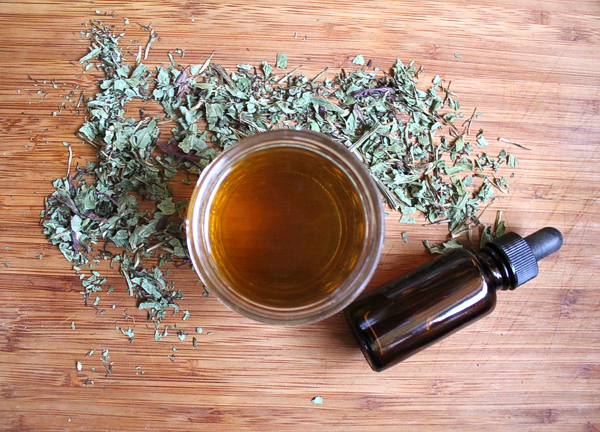
Echinacea is the herb to reach for when you feel the first signs of illness. Generations of herbalists have used it for its lymphatic and immune-boosting properties.
When you’re getting a sore throat, traveling, overtired, or think you might get sick, echinacea can support your body.
Echinacea Tincture Uses
Herbalists use echinacea tincture both topically and internally to treat a variety of ailments.
Topically, echinacea tincture is used for:
- Cleaning Cuts, Minor Wounds, and Burns
- Promoting Tissue Healing and Repair
Internally, echinacea tincture is used to:
- Support the Lymphatic and Immune System
- Treat Cold and Flu Symptoms
- Fight Infections
- Increase White Blood Cell Count
Additionally, the herb is currently being investigated for its potential:
- Treating Digestive Issues
In these cases, research is ongoing, and more work is needed to establish whether or not the benefits are scientifically significant.

Benefits of Echinacea Tincture
Echinacea Angustifolia tincture is widely known for promoting a healthy immune response. There are dozens if not hundreds of studies to back this up, bosting some pretty impressive stats.
Researchers are the University of Connecticut found that taking echinacea cuts the chances of catching a cold by 58%, and if you do get sick, echinacea can reduce the average duration of sickness by almost a day and a half.
Its general purpose infection-fighting powers are showing promise in the treatment of a number of infectious diseases, including herpes, malaria, syphilis and urinary tract infections.
Other studies show that echinacea is a potent anti-inflammatory, which may contribute to the treatment of numerous condition
Native Americans were the first to harness the benefits of this stunning wildflower. The Lakota people used echinacea roots to boost the immune system and reduce cold and flu symptoms. They also used the roots externally on wounds, burns, and venomous bites. The Cheyenne used it for toothaches, colds, fevers, and burns.
Today, echinacea remains among the most widely used herbal medicines. Herbalists have considered it an immune-boosting herb for generations, but until more recently, we haven’t fully understood how it works.
In a 2005 study, two groups of people were treated with echinacea or a placebo for seven days, starting at the onset of their cold. They received eight doses on the first day and three on subsequent days. The researchers found that the echinacea group had fewer daily cold symptoms.
Researchers also took blood samples during the same study. They found that the echinacea group had a significant and sustained increase in the total number of circulating white blood cells, including monocytes, neutrophils, and NK cells. One of the primary purposes of white blood cells is to fight infections.
Echinacea has also demonstrated strong antimicrobial activity. In a 2010 study, researchers tested an echinacea extract against a few common bacteria. They found that it was effective against Streptococcus pyogenes, which causes group A strep, Legionella pneumophila, which causes Legionnaires Disease, and Hemophilus influenzae, which can cause more minor infections like ear infections or severe infections like meningitis and pneumonia. The echinacea also reversed the inflammation related to these issues.
In addition, echinacea has demonstrated antiviral properties. A 2011 study found that echinacea was effective against several strains of human and avian influenza viruses tested (including a Tamiflu-resistant strain), as well as herpes simplex virus, respiratory syncytial virus, and rhinoviruses.
Anecdotally, herbalists report that echinacea can also help treat digestive disorders. While few modern studies have looked at echinacea and these types of ailments, it is plausible they work. Echinacea’s ability to raise white blood cell counts and inhibit bacteria could help fight off infections and parasites in the digestive tract. However, further research in this area is needed.
Externally, herbalists also use echinacea to speed wound healing and treat cuts, stings, and burns. Though research is limited, some lab tests have indicated that echinacea may promote wound healing when used topically.
People with allergies to plants in the daisy or Asteraceae family should exercise caution when first trying echinacea products. While echinacea is known as an immune booster, it may cause issues for people with auto-immune diseases. Consult a physician or clinical herbalist if you are unsure if echinacea is right for you.
Your dosage will vary with your body and specific needs, but herbalists generally recommend 1 to 2 droppers or 1 to 4 ml of echinacea tincture three times per day.
Parts Used for Tincture
It’s best to use fresh echinacea for your tincture. Some sources report that important compounds in echinacea deteriorate rapidly as the plant begins to oxidize.
Many herbalists focus on the plant’s roots, but the aerial portion of the plant, including the leaves and flowers, may also support the immune system. If you have access, including fresh leaves, roots, and flowers in your tincture is ideal.
Wash the roots well and chop up all parts of the plant. The smaller pieces have more surface area and will more readily absorb the alcohol for your tincture.
How to Make Echinacea Tincture
To make a echinacea tincture, you’ll need the following ingredients and equipment:
- Fresh Echinacea
- Vodka* (or any other palatable alcohol that’s at least 80 proof/40 percent — there’s no need to splurge here. I always use Smirnoff because it’s inexpensive and has a neutral taste)**
- One-pint mason jar with lid (amber glass is ideal, but as long as you keep the tincture away from light at all times, it won’t make a difference)
- Funnel
- Cheesecloth
- Fine mesh sieve
- Amber glass tincture bottles (with dropper)
*The Herbal Academy’s tincture-making course specifically recommends using 50% alcohol (100 proof) when working with echinacea.
**Never use isopropyl/rubbing alcohol for tinctures (or any other remedy you plan on ingesting). Even in small amounts, this type of alcohol is toxic and meant for external applications only.
To begin, fill your mason jar about ¾ full with fresh echinacea roots or a combination of roots, leaves, and flowers if available. Cover the echinacea with the alcohol of your choice.
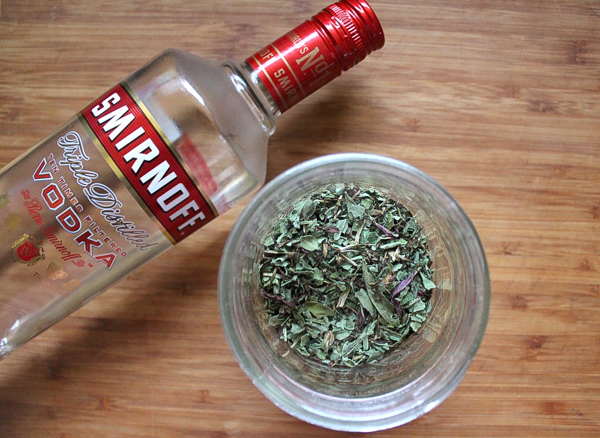
Close your jar with an airtight lid and store it somewhere cool and dark for 4 to 6 weeks. During this time, take your tincture out once a day and shake it gently.
It will still work if you miss a day or two, but it helps to be as consistent as possible.
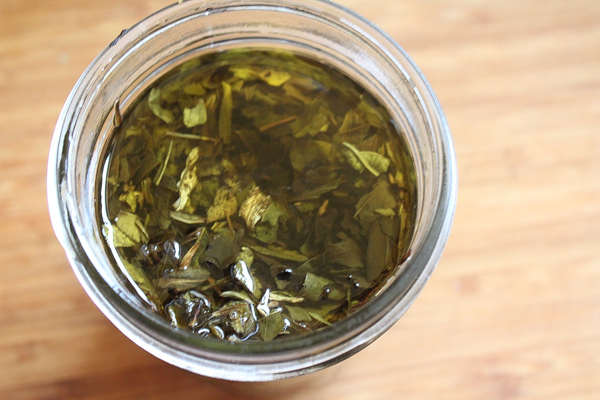
After your long wait, it’s finally time to decant or strain your tincture into small tincture bottles.
Use your funnel lined with several layers of cheesecloth or a fine mesh sieve to strain all the plant material out of your tincture. Squeeze the echinacea to make sure you get all of the alcohol out.
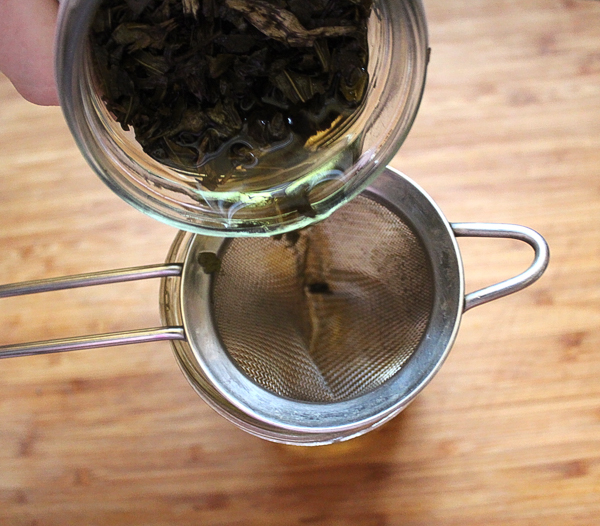
Once the tincture has been decanted, label the tincture bottles with the name, date, and suggested dosages (I use a small piece of masking tape and a marker; it peels off easily when I’m ready to use the bottle for something else).
Store your echinacea tincture out of direct sunlight, preferably in amber-colored glass bottles. Amber-colored tincture bottles are reusable and convenient for dosing. You can buy a dozen 2-ounce amber bottles for less than the cost of a single 1 ounce prepared echinacea tincture.
They’re also small enough that they can be taken on a trip and even in carry-on plane baggage. I tend to get sick most when I’m traveling, so having a portable immune booster is a big plus.
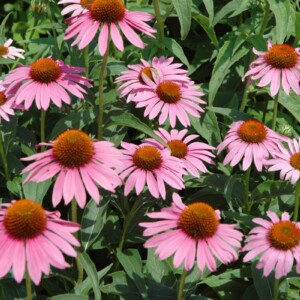
Echinacea Tincture
Ingredients
- Echinacea Fresh or dried Roots, leaves, and flowers. Use a combination if available.
- Vodka Vodka or another palatable alcohol, at least 80 proof/40% but ideally right around 50% or 100 proof.
Instructions
- Prepare Echinacea: Wash the roots thoroughly and chop all parts of the plant into small pieces to increase surface area.
- Fill the Mason Jar: Fill the jar about ¾ full with the chopped echinacea.
- Add Alcohol: Cover the echinacea completely with the chosen alcohol.
- Seal and Store: Close the jar with an airtight lid and store it in a cool, dark place for 4 to 6 weeks.
- Shake Daily: Gently shake the jar once a day to help the extraction process.
- Strain the Tincture: After 4 to 6 weeks, use a funnel lined with cheesecloth or a fine mesh sieve to strain the tincture into amber glass bottles. Squeeze the plant material to extract as much liquid as possible.
- Label and Store: Label the bottles with the date and suggested dosages. Store them out of direct sunlight.
Notes
Echinacea Tincture Dosage
I always suggest consulting with a clinical herbalist to get a specific dosage for your body and needs.
In general, herbalists recommend taking 1 to 2 droppers or 1 to 4 ml of echinacea tincture three times per day at the onset of an illness or when you may need extra immune support. You can also use echinacea tincture externally for minor cuts, wounds, and burns.
Herbalist Susan Weed, the Author of the best-selling Wise Woman Herbal, recommends a more specific dosage based on weight. She prescribes 1 drop for every 2 pounds of body weight.
For most children, that amounts to no more than a dropper full, and she admits that she often rounds to a full dropper full for children 25 to 50 pounds.
For adults and older children, she suggests an echinacea tincture dosage as follows:
50 to 100 pounds: 2 droppers full
100 to 150 pounds: 3 droppers full
150 to 200 pounds: 4 droppers full
200 to 250 pounds: 5 droppers full
When sick or experiencing acute symptoms, the full dosage can be administered every 1 to 2 hours. If you catch it before you’re really sick, every 3 to 4 hours should be sufficient.
Nonetheless, for an average 150-pound adult, that’s a lot of echinacea tincture over the course of 2 to 3 days. After that, she suggests tapering off to more occasional doses for a week or two to strengthen your immune system and prevent a relapse.
With those tincture dosage recommendations, how much echinacea tincture do you need to fight off a cold?
A dropper full is roughly 25 to 30 drops, and there are just under 100 drops to a teaspoon or around 600 drops to an ounce.
If you’re taking 3 to 4 droppers full, or roughly a teaspoon, every one to two hours, that’s a full one-ounce bottle in 6 to 12 hours.
Echinacea tincture has a bit of harshness to it, so it’s best to take it mixed with water or juice.
Echinacea Formulations
Echinacea is often paired with other herbs to help fight infections and boost the immune system. For external wounds and infections, echinacea works well with usnea tincture.
For extra immune support when fighting off colds, flu, and other viruses, echinacea is great to use with elderberry tincture. This has the added benefit of making the tincture a bit tastier, which really helps when working with echinacea.
It also works well in combination with marshmallow tincture, which will help soothe sore throats associated with many respiratory ailments.
Echinacea can also be paired with burdock if you’re dealing with stomach ailments and infections. Burdock can soothe discomfort and inflammation, while echinacea fights the infection.
Other common echinacea tincture blends include:
- Goldenseal
- Yarrow
- Linden
- Chamomile
- Elderflower
- Elderberry
- Rose Hips
- Oregon Grape
- Ginger
- Cayenne
Echinacea Tincture Side Effects
WebMD rates echinacea as “likely safe” for most applications. With any medicine, there’s always the potential for an allergic reaction, but such reactions are rare.
The main caution is for persons with autoimmune issues. Since echinacea interacts with the immune system and can stimulate a response, it could cause issues if you already have an abnormally functioning immune system. Specifically, if you have an overactive immune system this could make things worse.
Sustainably Harvesting Echinacea
Echinacea is a beautiful wildflower native to North America. Its bright petals and spiky seed head make it easy to pick out.
Sadly, wild echinacea populations are declining due to habitat destruction and intensive overharvesting. If you purchase echinacea, it’s best to buy it from suppliers who source their echinacea from organic farms rather than wild populations.
Another great option is growing your own echinacea. The most common species to grow and use in herbal preparations is Eastern Purple Coneflower (Echinacea purpurea). However, you can also grow other species, such as Pale Purple Coneflower (Echinacea pallida), Narrow-leaved Coneflower (Echinacea augustifolia), and Yellow Coneflower (Echinacea paradoxa).
Echinacea is great for pollinators and is a beautiful addition to any flower and herb garden. It’s also a drought-tolerant, low-maintenance perennial.
You can grow echinacea from seeds, plant starts, or divisions. Echinacea has a fibrous root system and can be divided in late fall or winter when the plant is dormant. Check with friends to see if anyone would be willing to give you a division. Some farmer’s markets and garden centers may also carry echinacea plants, particularly Echinacea purpurea.
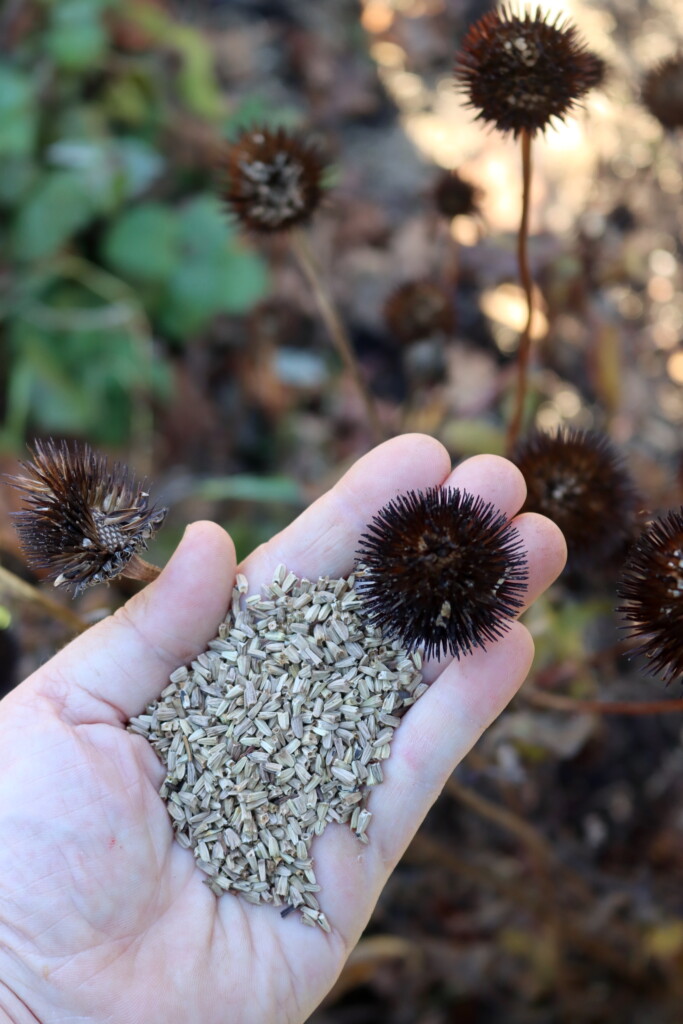
Starting from seed can be a bit more difficult. Germination rates for echinacea seed may only be around 50%, and all echinacea species except Echinacea purpurea need a period of cold stratification to break dormancy. For example, you must stratify Echinacea augustifolia for 90 to 120 days at 40°F.
Whatever route you take, echinacea is well worth the effort to have around!
What do you think? Are you ready to try making your own echinacea tincture?
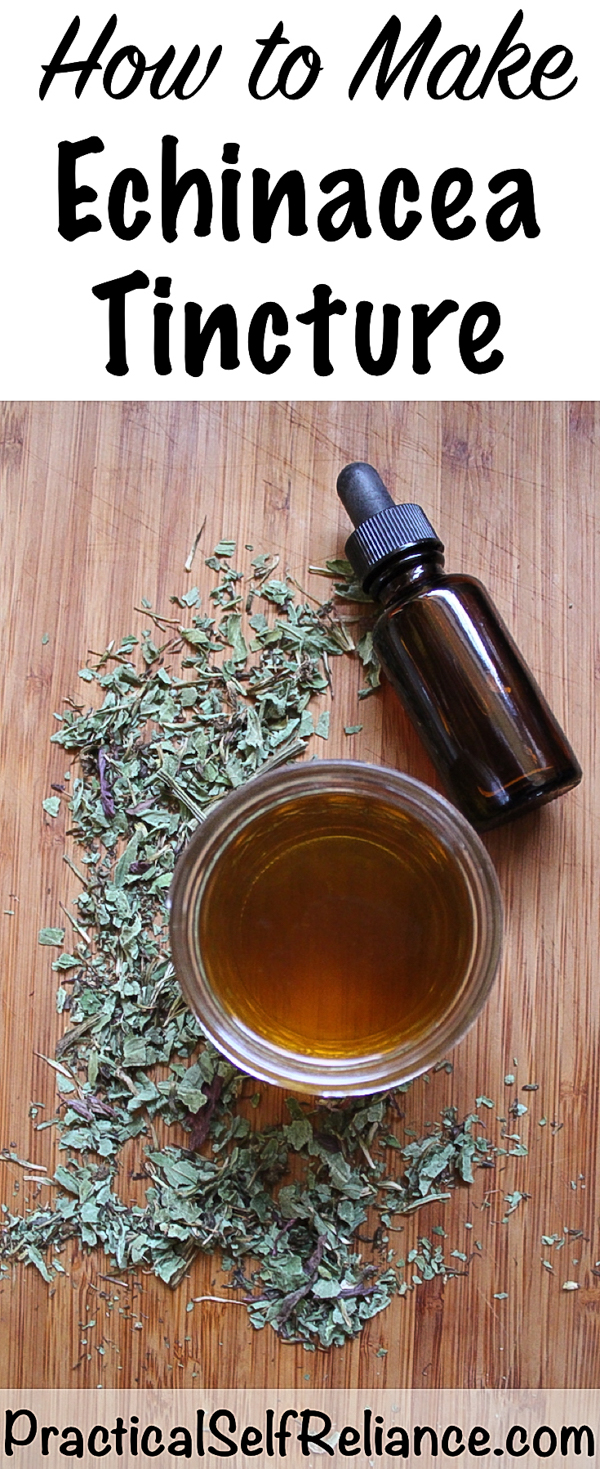


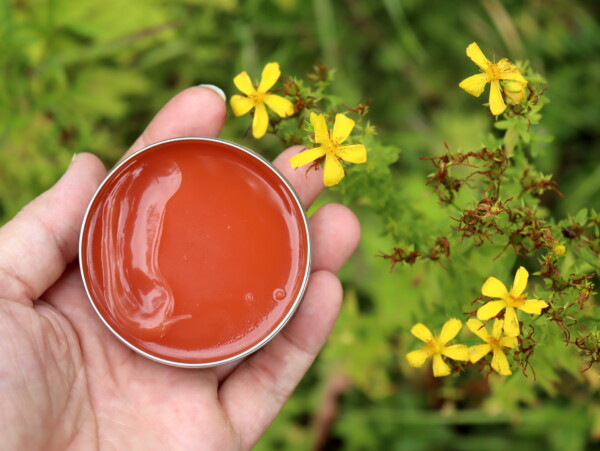
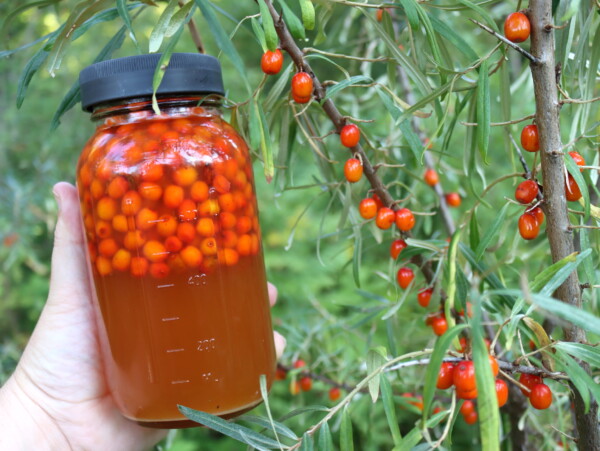
It should be mentioned here that the upper parts, leaves and flowers are mostly anti inflammatory. To get the immune protection roots should be used.
Hi, have you ever considered making a echinacea and elderberry wine? Is it even feasible? I tried to google echinacea wine recipes, but to no avail. Perhaps after extraction in a tincture it could be added to an elderberry wine? Not sure how the flavors would play out, but might be something to look into. Thanks!
Yes, you definitly could do that. What you’d do is use echinacea tea in place of the water in an elderberry wine recipe. Then, at the end at bottling, you could fortify the wine with some amount of echinacea tincture. (Wines are usually fortified with a few ounces of port if fortified at all, but echinacea tincture would work too.). Echinacea tends to have a pretty abrasive flavor, but when I’ve mixed echinacea/elderberry in tincture it really mellows. I think a mixed wine could be lovely, provided you didn’t overdo it on the echinacea.
Thank you so much for your advice and I greatly appreciate your time!
You’re very welcome.
Morning. Suly here.
If I want to make turmeric and Ginger tinctures.
My grandma has stomach problems and pain….
Well she’s 88.
You said I can make them
Separate and the I can mix as I make the bottles?
I just want to
Make sure I don’t mess up. This would be my 1st attempt.
Any suggestions?
Yes, you can definitely make separate tinctures and then mix them together as you bottle them. I actually prefer this method because you have more flexibility in your formulas.
I am making augustfolia Echineacia roots tincture. It’s only been a week and the jar looks green, like pond scum green. Is this normal? I read that it is supposed to be dark amber color.
I’m not sure what would be causing it to turn green. Can you tell me exactly how you prepared the tincture?
I put echinecia root in clean sterile jar and poured organic vodka over it and pit on lid and stored in cupboard. I’ve made ginger, tumeric tinctures this same way. I shake every day. The roots are green in color but I was just surprised at how it looks after a week. The herbe on the bottom of one jar looks cloudy.
I have never seen green echinacea roots before. That would definitely explain the green tincture color but I would be a little concerned about the roots being green.
I found a jar of tincture unfiltered from 2017. Vodka base. Throw it out?
It’s totally up to you, depending on its condition. I personally would probably throw it out and make new.
Thank you for your help. I am new and just starting to make tinctures and growing the medicinal plants too. I would like to make a tincture with first year plants. Whats the liability of not waiting until year 2 or 3?
I understand your urgency to harvest the echinacea but it’s super important to allow the plant time to become established so that it is strong enough to withstand the harvest without harming the plant. You can always purchase the dried herb online in the meantime.
I made a batch of tincture with dried echinacea augustifolia root purchased from a trusted source and vodka. It came out very dark brown not the pleasing amber I am used to with store bought or in your pics. Smells and looks fine. Any thoughts? Thank you for for this wonderful information. Glad I stumbled on your blog. I have had amazing success with resolving infections with echinacea a. tinctures which are no longer available–everything is mixed now. I am growing my own plants too. Thank you!
I would say that as long as your echinacea is from a trusted source, you should be fine as long as nothing else seems off.
If I wanted to make a blend and add some of the other suggestions like elderberry flowers or fresh ginger, would I add them to the alcohol with the fresh or dried echinacea? Or should the additional ingredients be added later?
Thank you for your time!!
If you are wanting to tincture them, then you would want to add them at the same time. An alternative to this is to tincture them all separately and then mix the individual tinctures at the end. This allows you to have individual tinctures that can be used for other purposes as well.
I have some of this in the garden. I should make this.
Can you add to the jar? So while it’s sitting for the 6 weeks been I add more flowers since they grow at different rates or no? Also for kids- it’s Acv better to use or glycerine?
So I can use the flowers fresh and dried flowers together or choose one option?
You can use fresh or dried but I don’t know if I would do both together. You can add to it as you go or you could just make a few smaller batches and then add them all together once they’re finished. Different menstruums extract different constituents from the herbs. Glycerine will extract tannins, some minerals, trace minerals, alkaloids, and acids and Vinegar will extract alkaloids, minerals, and trace minerals. Vinegars are typically used more for nutritional purposes and alcohol and glycerine are used more for medicinal purposes. I personally don’t have a problem with using alcohol as a tincture for children because the amount that they are getting is very small and you’re getting a lot more medicinal benefit but it’s obviously a personal choice.
This is such amazing info! I just purchased amber Mason jars and droppers. I plan to use organic cut and sifted Echinacea Angustifolia herb and organic dried Elderberries (both from Frontier Co-op, on AMZ). While I’m targeting a variety of the noted benefits, my largest hope is that the tincture will aid in joint inflammation, both related to injury and arthritis. I know that general echinacea supplements defer to immunity support/lack of long-term use, so I wanted to ask about the combo recipe above, again, for inflammation, and what your recommendation might be for that use. Also, regarding the dosage recommendations based on weight (from Susan Weed), were they related to colds or as a daily intake? No rush, based on the recipe, it’s going to be a few months before I have any tincture…which brings me to my final question. In your article, you say that after 1 – 3 months of infusing, it’s time to filter the tincture. How do you know? Is there a visual or olfactory catalyst that lets you know whether it should be 4, 8, 12 weeks? Also, should the jar not be opened until you have a visual queue (e.g., by breaking the airtight seal, do you disrupt the process)?
I am brand new at this so please forgive what I assume are rookie questions and thank you very much for sharing your knowledge!
Hi Julie,
Lets see if I can get to all of your questions here…
I haven’t used echinacea as an anti-inflammatory, more for general immune support. It is supposed to be an anti-inflammatory herb, I just personally haven’t tried to use it for that yet.
When I’ve had periodic bouts of inflammation for various reasons over the years, the things that have helped me the most are burdock (when it’s more of a lymphatic or systemic inflammation), and turmeric/ginger for joint type inflammation and comfrey/arnica for muscle type issues. That’s just my experience though.
The dosage there is for acute issues, as in illness you’re trying to nip in the bud right when you start to get sick. Beyond that, “Nonetheless, for an average 150-pound adult, that’s a lot of echinacea tincture over the course of 2 to 3 days. After that, she suggests tapering off to more occasional doses for a week or two to strengthen your immune system and prevent a relapse.”
So beyond acute issues, more like a couple times a week (rather than every 3-4 hours) is more appropriate.
Dosages can really vary based on person though, so you may want to talk to a clinical herbalist about your specific case. (I am not a clinical herbalist.)
The infusion time is a general guideline, and the actual time can vary without really impacting the tincture too much. At a minimum, you want 4 weeks to fully infuse. I usually let them go 6-8 weeks, as that’s my habit and it seems to work well. Longer is fine too, and if you forget them for many months no harm will come to it. (other than, eventually after about 18 months to 2 years they start to degrade and lose potency, but that’s a long time to forget it in the cupboard).
There’s no real visual signal, as after about a week or so the tincture should already be a dark brown and that’s it’s final color. Smell is similar, and after a week or two it’ll smell as it will when it’s finished. You can open it anytime you want, it won’t disrupt the process at all. Feel free to check in on it, and make sure to top it off with alcohol if the herbs suck up the liquid and they’re over the liquid line.
Hope this helps!